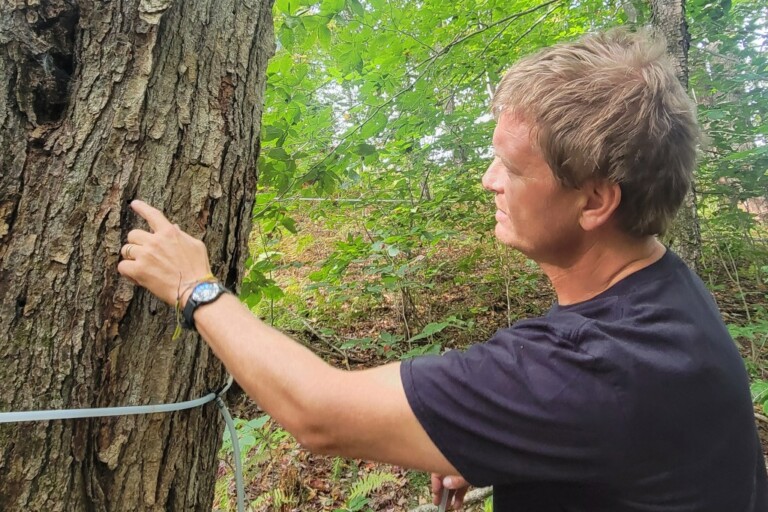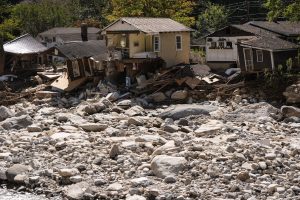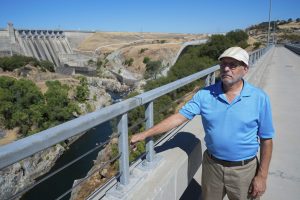Hurricanes Milton and Helene showed the problem of insurance and moral hazard. Here’s how to fix it
A version of this article originally appeared in Quartz’s members-only Weekend Brief newsletter. Quartz members get access to exclusive newsletters and more. Sign up here .
Suggested Reading
California’s new $20 minimum wage for fast food workers didn’t cost jobs, study says
Suggested Reading
Hurricane Milton has blown through and the worst is over for Florida. But it’s not over for everyone. Meteorologists warn we’ll get stronger and more frequent tropical storms in the coming years, as the oceans warm and sea levels rise thanks to climate change.
Let’s talk about one reason these storms keep causing so much damage — and how we might solve the problem.
Moral hazard
There’s a term that economists like to use: moral hazard. It refers to the practice of creating financial incentives that promote risky behavior. Last week, those incentives for risky economic behavior were on full view as Hurricane Helene and then Hurricane Milton slammed into the southern U.S. Surging tides and 120-mile-an-hour winds ripped the roofs off homes and businesses (and even the Tampa Bay Rays baseball stadium), flooding everything within range of the coast and racking up damage estimated to be well over $100 billion.
It’s not the first time coastal Florida has been devastated by violent storms, and meteorologists, climate scientists, and insurance risk advisors say it’s a dead certainty that it will happen again — and with increasing frequency. So why are residents and businesses rebuilding, time after time, in the same places that were destroyed the last time around?
Insurance
The answer, people who have studied the problem say, is insurance. Even as private insurers flee hurricane zones or raise premiums and lower coverage limits, the federal government, and to a lesser degree the state of Florida, remain as the insurers of last resort — paying out claims to people whose homes were washed away and businesses that were flooded out. Programs like the National Flood Insurance Program, managed by the much-maligned Federal Emergency Management Agency, the Small Business Administration, and numerous other government programs hand out cash. The federal departments of Transportation, Housing and Urban Development, and Interior, as well as organizations like the Army Corps of Engineers and the federal Highway Trust Fund, along with state and local government, help to rebuild devastated infrastructure.
“This is a classic moral hazard,” said Simon Buechler, an assistant professor of finance at Miami University in Oxford, Ohio, and an expert on real estate, finance, and catastrophes. That’s because government insurance programs like the NFIP underprice the risk, so homeowners and businesses in flood-prone areas pay below market price for insurance.
“They basically bail out the people who didn’t have insurance or the people who were not fully covered,” Buechler said. “You know the federal government and the state government are going to come in and help you when you have a disaster, so you don’t care.”
Even worse, Buechler said, the guarantee of a government bailout actually encourages people to take risks they won’t have to pay for. “We know from research that it triggers people to move into these areas where you have more of these floods and more exposure to hurricanes, and that’s partly why we see more of these multi-billion dollar events,” he said.
Harbinger hurricanes
But Helene and Milton are just the harbingers of what meteorologist Jon Davis of Everstream Analytics says is a new era of environmental risk. Rising sea levels, warming oceans, and overall higher temperatures and higher humidity are putting everything in low-lying coastal areas like Florida at risk — and the region isn’t ready for it.
“The kind of infrastructure we have in place right now is not prepared for what’s been happening lately and what’s going to happen in the future, the decadal future,” Davis said.
Making the area storm-resistant is the only solution, said Michael Hecht, CEO of Greater New Orleans, Inc., the city’s economic development corporation. He helped New York rebuild after the Sept. 11, 2001 terrorist attacks, and helped New Orleans recover from Hurricane Katrina.
“Most disasters are man-made policy decisions that led to bad outcomes,” he said, citing the engineering, design, and planning mistakes that led to the Katrina disaster. Rather than putting money into rebuilding properties that will just get damaged in the next storm, he said, “What we have to do is take the money and invest it in resilience, better construction methods, and protect our communities. If we do that, we can still live in places near water, and do it in a way that reduces our exposure.”
And for people who are still in the path of disaster, Hecht said, pay them to move to high ground.
Follow the money
To build new developments — or rebuild areas that have been devastated by hurricanes — developers need to borrow money from banks and investment funds, and they need the insurance to protect those funds, said Scott Popilek, Atlantic regional leader at Risk Strategies, an insurance consultant and brokerage. “In Florida, over the last few years we have seen a pullback of developers and developments being able to find insurance for certain developments,” Popilek said. “When you start getting this frequency and severity [of storms] on a consistent basis, banks will be concerned about their funds.”
One way or another, a crisis is coming for Florida’s economy because of the growing frequency and power of extreme weather events.
“Either insurance affordability causes the crisis, climate-induced repeated damage causes the crisis, or rising sea levels cause the crisis,” sometime in the next few decades, said Jay Guin, chief research officer for extreme events solutions at Verisk, an insurance industry risk consultant.
The crunch is already coming on the retail level. As The Wall Street Journal reported last week, the Great Florida Migration is coming undone, leaving a surplus of housing as buyers lose interest in moving south. And now extreme weather is making it worse, as more people decide to leave, putting more homes on the market as dwindling buyer interest slows sales.
A possible solution
Some insurance experts and climate watchers do see a way out of the problem: Create a federally-backed national fund to insure against climate disasters of every kind, and carefully manage the risks it underwrites.
It’s not that the market has failed, forcing government to step in, it’s that private insurers are doing what they should be doing: If they can’t sell insurance at the rates they need to accommodate risk, they pull out of markets.
Cliff Rossi, a former head of global consumer risk management risk at Citi, is a leading advocate for a national climate risk insurer that would be chartered by the federal government — much like mortgage insurers Fannie Mae and Freddie Mac, which are known as government-sponsored entities, or GSEs.
Rossi, now Director of the Smith Enterprise Risk Consortium at the University of Maryland’s business school, said that anyone whose mortgage is guaranteed through Freddie or Fannie is already required to have flood insurance if their property is in a designated flood plain.
The current system, Rossi said, is flawed. “It does incentivize folks to continue to reside in these very critical areas that are increasingly exposed to [severe] storms,” he said. “We have to rethink the approach to who is allowed to have insurance.”
Denying government-backed insurance to second homes, requiring adherence to strict building codes, and limiting the amount of money that can be paid out on any one claim would limit both the damage and the cost of cleaning up and rebuilding.
State-funded insurance programs aimed at disaster recovery, like Florida’s Citizens insurance, a not-for-profit insurer of last resort with 1.26 million policies in force, have been running out of cash, Rossi noted. “If you’re concentrating on just homeowners in the state of Florida, you’ve concentrated risk to such a level that it makes it extremely expensive,” he said.
A national natural hazard insurance company?
That’s where Rossi’s Federal Natural Hazard Insurance Corporation comes in. As a GSE, the insurer would package its credit risk, much like Fannie and Freddie package their mortgage risk, and resell it on the private market. His plan would absorb FEMA’s National Flood Insurance Program, too.
“It would be part of this new federal agency that would be staffed with actuaries and scientists who are better able to qualify and price out the risk associated with all kinds of climate risk, including drought, wildfires, earthquakes as well as storms and flooding,” Rossi said. The company would then repackage its risk and sell it.
This would solve the problem of private insurers backing away from climate-related risk because of the uncertainty involved in estimating that risk. But by having an entity dedicated to the task of pricing climate risk and insuring against it, and having the federal government — backed by the U.S. Treasury — as the ultimate guarantor, the risk would be reduced to the point that businesses could rely on the insurance to be affordable and comprehensive. And the stricter qualifying requirements for the insurance would reduce the incentives for locating or rebuilding in the wrong spot.
Rossi has spent time with large insurance companies, state governments, and federal officials developing his plan. All the players seem enthusiastic, he said, but there’s only one problem: Congress. A new GSE would need Congress to approve its charter, and in a divided government that’s unlikely to happen.
“It’s going to take more of those back-to-back category 4 or 5 storms coming through,” Rossi said. “And at some point that will be the catalyst for some sort of major intervention.”
Information contained on this page is provided by an independent third-party content provider. This website make no warranties or representations in connection therewith. If you are affiliated with this page and would like it removed please contact editor @producerpress.com






